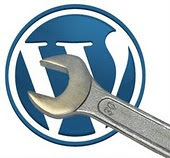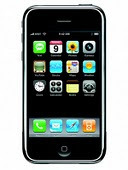When you're looking for ways to get traffic to your website, you must look at your webpages and optimize. I found a great article by George Peirson, who goes through the 5 ways in which you can optimize your site for better search engine placement. It's a great how to with optimizing your site.
The Five Ways You Should Be Using Keywords
by George Peirson
We have all read lots of articles on how to gather keywords, how to compile a huge keyword list, how to make these keywords relevant to our web site. But exactly what do we do with all these keywords once we have them?
Knowing where and how you can use your keywords will greatly improve the efficiency of your search engine optimization.
There are 5 places in a web page where you can use keywords:
The Title Tag
The Keyword Meta Tag
The Description Meta Tag
Alt Tags for images
Body copy on the page
Of these the page Body Copy, the readable text on the page, is the single most important place for your keywords. More about this later.
Let’s first take a look at the Title Tag. This is one of the tags in the head section of the html code of your web page and lists the title that is displayed in the web browser. For instance, Internet Explorer displays this tag in the top bar of the browser window. But there are other uses for the Title Tag as well. Most search engines will index this tag for information about your site and many search engines will use this tag as the title of your listing.
In general you can use from 60 to 115 characters in a Title Tag. The Tag can include the company name, especially if it is a well known company, and should include your most important keywords. Consider this a short description of your web page. One more thing, the Title Tag is also used as the link when the URL is saved into a web browser favorites list.Sponsored Links
Related Articles
Sneaky (But Legal) Places To Insert Keywords For Higher Rankings
Creating Keyword Rich Pages
8 Easy Ways to Optimize Your Website
Search Engine Basics: Title And META-Tags
Keywords and SEO. The Facts.
The Keyword Meta Tag used to be the main way search engines indexed your page. Now-a-days many search engines will simply ignore this tag, but that may not always stay the case. Some search engines still take s look at this tag to help categorize your site. There is no reason not to have this tag on your page, just in case. You are not penalized for including a Keyword Meta Tag.
The keywords should be separated by a comma. Put more specific keywords first then put the less important and general keywords later on. Search engines no longer pay attention to the case of a keyword, so the keywords can all be lower case. I have seen recommendations of 25 keywords or 1000 characters in the list. In general Keyword pairs or triplets are better than single keywords. I try to have one or two lines of keywords if I use this tag.
The Description Meta Tag is slowly joining the Keywords Meta Tag on the lack of support list. But right now it is still a valuable place to use your keywords. Many search engines will look at the description Meta tag for keywords to compare against your body copy. Yahoo goes one step further and will use your description tag as the description of your site in their listings.
Consider the description tag just like it is named, a concise description of your site. Keep it to a short paragraph, under 50 words.
Alt tags are text descriptions that are included with the code used to display images on a page. Basically an Alt tag is the Alternate Text version of the image in case the image is not displayed. Alt tags are important for creating a fully accessible site for people who use screen reader technology that reads the page out loud through their computer speakers. Obviously an image cannot be read aloud, but the Alt tag can.
Alt tags are also displayed as a quick popup when you “hover” your mouse pointer over an image. Many search engines, including Google, will index the Alt tags along with the rest of the body copy, making these ideal places to slip in a few more keywords. Just keep in mind that the text should accurately reflect the content of the image. Plus don’t use Alt tags on images that would not normally be read out loud, such as separator lines or bullets.
This brings us to the main place to use your keywords, the body copy on the page, the text that your visitors are reading when they visit your site. The major search engines will no longer give you a top placement just for having the most instances of a particular keyword on your page. They will give top listing to what they believe is the most relevant page on a topic.
Your job is to work your keyword into the text frequently, but appropriately. Select one or two keywords and make the page specifically about those keywords. Think of yourself giving a PowerPoint presentation to an audience of your best customers. Your PowerPoint slides will be your paragraphs. They should be concise and to the point, using your keywords to drive home your point. And, just like in a PowerPoint presentation, you can use bulleted lists to call out the several benefits of your site or product, each time relating it to your selected keyword.
So use your keywords appropriately on your site and use them where you can. This will greatly increase your search engine effectiveness.
George Peirson is the CEO of How To Gurus. He is the author of over 30 multimedia based tutorial training titles. To see training sets and other articles by George Peirson visit How To Gurus
Read more...
Thursday, October 6, 2005
Saturday, October 1, 2005
Take the Sting Out Of Podcasting
Podcasting has been coming into it's own since, I believe, 2004. It's a new concept, and a new way to reach your customers, and for your customers to get to know you, as well, as about you. They realize that the owner of the website they frequent is real, and has a voice.
If you want to do some podcasting, want to learn, and don't want to invest a lot, then read on. How about, just the cost of an ebook?
Podcasting – Is It Right For Your Website?
By Vickie J. Scanlon
I have been seeing the word podcasting floating around the Internet for a while. And actually read an article that stated it’s arrival. However, it never really gave me any information about Podcasting. And yes, my curiosity got the better of me. I decided it was time to find out more about podcasting, and learn the what and how—and if it could help my business. And, most importantly, how much I would have to spend to partake in this new technology.
What is Podcasting?
Podcasting is simply a web blog that is in an audio format. And the audio portion is presented by way of an MP3 file. In essence, it is your own radio broadcast, relating to anything you want. The transmission of the podcast is through an RSS (Real Simple Syndication) technology.
How Can I Use It In My Business?
How Can I Use It In My Business? To me, that is the most important question to answer. Why get the technology if it is not going to be of any use to you. Right? Well, I feel that it can be of use to any business. For example: let’s say that your site is based around a niche market, say cats. You could base your podcast on your niche market, supplying them information and tips about cats, with an audio, and then tell them to follow up to your website or blog, for that matter, for additional information.
What can audio do for your business? It puts a voice behind the website, and makes you a real person. And, by also supplying the same information, with follow-up material in your blog, you have made a connection. You are now a real person, with a real voice, and not a façade.
Where can I get a Podcast?
If you’re new to podcasting, know very little about it, and want to see if it can fit your needs on your site-look at my articles Podcasting Overview to give you information on podcasting and how you can make money with it. And Mechanics of a Podcast , which gives you the basics of starting a podcast.
Read more...
If you want to do some podcasting, want to learn, and don't want to invest a lot, then read on. How about, just the cost of an ebook?
Podcasting – Is It Right For Your Website?
By Vickie J. Scanlon
I have been seeing the word podcasting floating around the Internet for a while. And actually read an article that stated it’s arrival. However, it never really gave me any information about Podcasting. And yes, my curiosity got the better of me. I decided it was time to find out more about podcasting, and learn the what and how—and if it could help my business. And, most importantly, how much I would have to spend to partake in this new technology.
What is Podcasting?
Podcasting is simply a web blog that is in an audio format. And the audio portion is presented by way of an MP3 file. In essence, it is your own radio broadcast, relating to anything you want. The transmission of the podcast is through an RSS (Real Simple Syndication) technology.
How Can I Use It In My Business?
How Can I Use It In My Business? To me, that is the most important question to answer. Why get the technology if it is not going to be of any use to you. Right? Well, I feel that it can be of use to any business. For example: let’s say that your site is based around a niche market, say cats. You could base your podcast on your niche market, supplying them information and tips about cats, with an audio, and then tell them to follow up to your website or blog, for that matter, for additional information.
What can audio do for your business? It puts a voice behind the website, and makes you a real person. And, by also supplying the same information, with follow-up material in your blog, you have made a connection. You are now a real person, with a real voice, and not a façade.
Where can I get a Podcast?
If you’re new to podcasting, know very little about it, and want to see if it can fit your needs on your site-look at my articles Podcasting Overview to give you information on podcasting and how you can make money with it. And Mechanics of a Podcast , which gives you the basics of starting a podcast.
Read more...
Subscribe to:
Posts (Atom)











